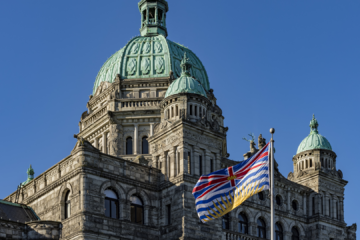CRT roundup—bylaws, repairs, and significant change in use or appearance of common property
March 30, 2017
BY Kevin Zakreski
March 2017 has seen two strata-property decisions from the Civil Resolution Tribunal.
Unauthorized amendment of bylaws and repair of deck
Fournier v The Owners, Strata Plan LMS 768, 2017 CRTBC 11 (PDF), concerned decisions taken at, and actions flowing from, a strata corporation’s special general meeting. At the meeting, two resolutions were approved: one amending the strata corporation’s bylaws to add a rental-restriction bylaw, the other authorizing the strata corporation to spend money from the contingency reserve fund to repair a deck attached to a strata lot. An owner challenged both “events that occurred at, and as a result of,” the special general meeting, alleging an improper filing of consolidated bylaws in the land title office and an improper expenditure of funds to repair the deck.
According to “Land Title Office records,” the strata corporation had registered bylaws in July 1996. These 1996 bylaws provided “that the strata corporation shall maintain and repair the exterior of the buildings, excluding balconies and patios included in the strata lot, but including the decorating of the whole of the exterior of the buildings.” Since the advent of the Strata Property Act in 2000, these bylaws were only amended once (adding an age restriction).
After adoption of the rental-restriction bylaw at the strata corporation’s special general meeting, “a new set of bylaws, numbering 13 pages, was registered with the Land Title Office.” The strata corporation argued “that it was entitled to register the consolidated bylaws with the Land Titles Office on February 5, 2016 on the basis that ‘No consultation or voting is needed’ to adopt the Standard Bylaws” and that “[t]he current Strata Council did not change the standard Strata Property Act bylaws that came into effect in the year 2000. The amended bylaws from previous years (dated and registered) from the old condominium act were inserted into the appropriate clauses of the standard Strata Property Act.” The tribunal member didn’t accept these arguments:
Given the application of section 17.11 of the Regulation, I am of the view that the only way the 1996 bylaws which do not conflict with parts 1 through 17 of the SPA can be amended is for the strata to hold a vote on such amendments as required by section 128(1)(a) of the SPA, which requires a three-quarter vote at an annual or special general meeting.
Since there was no evidence of such a vote at the special general meeting, the tribunal member “order[ed] that the strata re-file the 1996 bylaws, along with the amendment related to the rental restriction bylaw, which was appropriately passed at the SGM.”
The tribunal member also found that the expenditure of funds on repairs to the deck failed to comply with a condition set out in the authorizing resolution to obtain multiple quotes for the proposed repair. As a result, “the expenditure of the money from the contingency reserve fund was not undertaken in accordance with the requirements of section 96 of the SPA.”
The tribunal member found, in addition, that the strata corporation was unable to rely on section 98 of the act, since the strata corporation did not “provide any information to indicate that there were reasonable grounds to believe that there was an emergency which required immediate expenditure on the deck repairs.”
Finally, the tribunal member made these concluding remarks:
In light of my findings above, particularly with respect to the application of the 1996 bylaws at the time of the January 28, 2016 SGM, I would suggest that the strata may now wish to consider who ought to have been responsible for paying the cost of the deck for unit #203. Specifically, the strata may wish to consider what the intention of the 1996 bylaws was with respect to deck repairs. I take this opportunity to point out that that section 116(f) of the 1996 bylaws specifically sets out that balconies, which I consider to be a term that is interchangeable with deck, are an item that is excluded from the strata’s repair responsibilities. I note further that section 115(c) of the 1996 bylaws indicates that an owner shall repair and maintain their strata lot, including windows and doors and areas allocated to their exclusive use. It strikes me that the deck surface attached to unit #203 is an area allocated to the exclusive use of the owner of that unit because of the limited common property designation on the strata plan.
Significant change in use or appearance of common property by removal of trees and shrubs
Wood v The Owners, Strata Plan VIS 97, 2017 CRTBC 12 (PDF), concerned a dispute “about the strata council’s February 2016 removal of three trees or shrubs (plantings) from the common property.” A strata-lot owner applied to the CRT, arguing that this act was a significant change in the use or appearance of common property, which section 71 of the Strata Property Act only allows upon authorization by a resolution passed by a 3/4 vote.
The tribunal member described the plantings and common property at issue in the following terms:
Among other plants, the three plantings, a maple tree and two other trees or shrubs, were located on an 8’ to 10’ wide strip of common property. This area (the strip), sat between the hotel’s retaining wall and the strata’s carport. The owner’s view of the plantings in the strip is largely blocked by the carport roof, except for branches that grow higher than the carport roof. Beyond the strip and northeast towards the ocean, the owner can see the hotel’s lawn and the steam coming out of the hotel’s boiler.
The tribunal member noted further that “[i]t is undisputed that the strata has a duty to repair and maintain the strip.” The strata corporation argued that “a single small maple tree was removed in February 2016 as part of ongoing preventative maintenance, along with two smaller shrubs.”
The tribunal member made the following findings:
I find that it is clear on the evidence that there was no 3/4 vote taken to approve the February 2016 removal of the plantings, namely the maple tree and the two “shrubs” in the strip. I find it is also clear that there were no reasonable grounds to believe that immediate removal of the maple tree and “shrubs” was necessary. While potential future damage was one of the strata’s concerns about the maple tree, I find there is no real suggestion that its removal was immediately necessary.
The tribunal member also reviewed past court decisions on section 71, paying special attention to the guidelines set out in Anthony v Schnapp, 2016 BCSC 1839. Applying these considerations and guidelines, the tribunal member concluded that “the removal of the plantings was not a significant change that required a 3/4 vote resolution to be passed by the strata.” In the result, the application was dismissed.











































